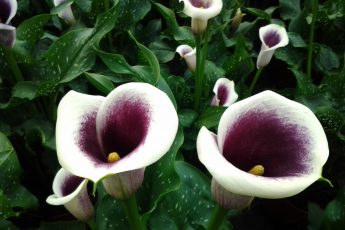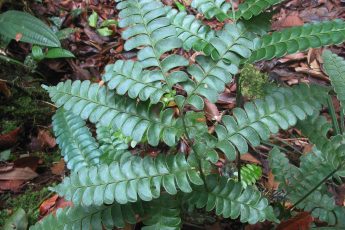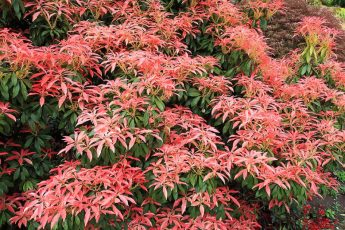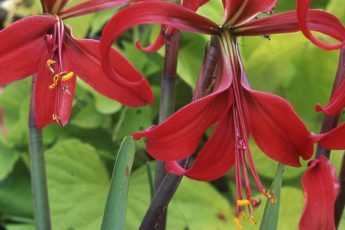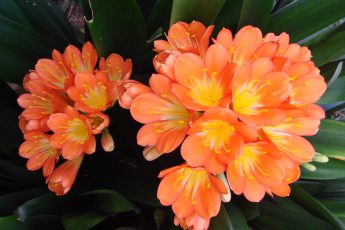Welcome to the comprehensive guide on the Crinum plant. This unique member of the Amaryllidaceae family is renowned for its impressive height, with a flower stem reaching up to 1 meter, and its spectacular blooms. Originating from South Africa and tropical America, the Crinum plant is a fascinating addition to any garden or indoor space. This grassy onion-like plant is generally easy to cultivate with some minor challenges, making it suitable for both novice and expert gardeners.
An Overview of the Crinum Plant
Crinum plants, with their bulbous structures, can grow to a height ranging from 30 to 80 centimeters, and sometimes over a meter in the case of specific varieties like the Crinum augustum. These plants have a long lifespan, with the potential to thrive for many years with proper care. A mature Crinum bulb can reach a diameter of 20-25 centimeters, indicating its robust nature and resilience in varying conditions.
Optimal Growing Conditions
For successful cultivation, understanding the Crinum plant’s preferred environment is essential. During the summer months, the plant thrives best in temperatures ranging from 68-77°F (20-25°C), while in winter, a cooler rest period at 50-59°F (10-15°C) is ideal. This rest period is crucial for flower bud formation. Crinum does well in moderate humidity but does require occasional misting in winter to counteract the effects of dry indoor air.
Lighting and Soil Requirements
Crinum plants flourish in brightly lit environments, with 3-4 hours of diffused sunlight each day. Whether placed in a western, eastern, or southern window, ensuring light is filtered will avoid potential leaf scorch. Remarkably, the Crinum can also adapt to artificial lighting conditions, making it versatile for indoor planting.
The plant prefers a nutrient-rich, loose soil composition. An ideal mix includes three parts sod land, three parts leaf mold, and one part coarse sand or perlite. This will ensure adequate drainage, a critical factor in preventing bulb rot. Always select a pot with proper drainage holes to maintain optimal soil moisture levels.
Watering and Fertilization
Watering is a key component in Crinum care. It’s important to keep the soil consistently moist with lukewarm water, avoiding both drought and waterlogging. As autumn approaches, gradually reduce watering while preventing the substrate from completely drying out. In winter, minimal watering is needed to maintain slight soil moisture.
Regular feeding with a liquid fertilizer high in potassium is recommended every 3-4 weeks starting from the growth period. This nutrition regime supports strong plant health and encourages robust blooming.
Propagation Techniques
Crinum can be propagated through bulb separation and seed planting. The separation of bulb-children is viable; these young bulbs should be planted in small pots with a sand and peat mix. Placing the pot in indirect light facilitates germination, after which the plant can be transferred to permanent soil. Watering should be moderate initially, increasing as the plant establishes itself. Alternatively, you can propagate through fresh seeds sown individually in a peat-sand mixture, allowing 4-5 years for flowering.
Blooming and Maintenance
With white and tender pink funnel-shaped flowers, the Crinum’s blooming season typically occurs from August to September. However, by strategically managing the plant’s rest period to coincide with late summer and early autumn, winter blooming can be achieved. Regularly removing faded flowers helps prolong the flowering period.
A large Crinum bulb should be transplanted every 2-3 years, ideally in March before the next growth phase, to ensure optimal blooming conditions. Close pots with a 25-30 cm diameter are recommended, and burying the bulb halfway aids stability and growth. Annually replacing the top soil layer can also benefit plant health.
Potential Challenges and Solutions
Though Crinum plants are generally resilient, they may encounter pests like thrips and mealybugs. In such cases, using insecticides effectively targets these issues. The presence of a daffodil fly can cause bulb rot, while red blotches on leaves indicate a red burn threat. Ensuring a proper rest period, sufficient light, and balanced watering are vital to prevent flowering issues and maintain vibrant foliage.
Overall, the Crinum plant offers a stunning floral display with the right care and conditions. Its ability to adapt to indoor and garden environments, coupled with its striking blooms, makes it a treasured component of any plant collection. As with any plant, understanding its preferences and abiding by care guidelines will ensure a flourishing Crinum that will enchant gardeners and visitors alike year after year.


